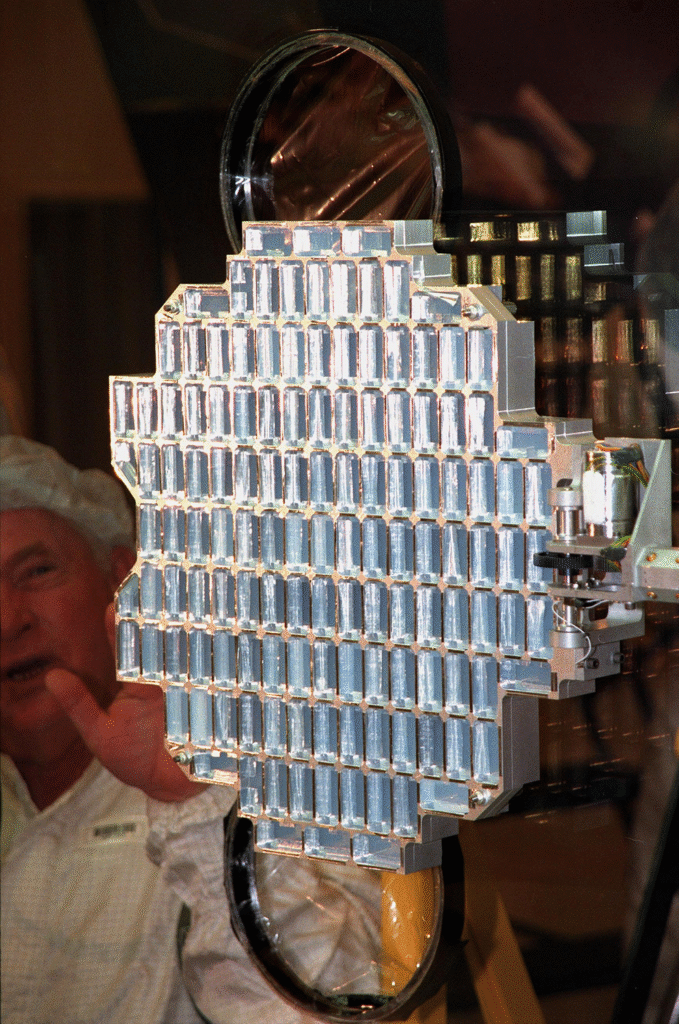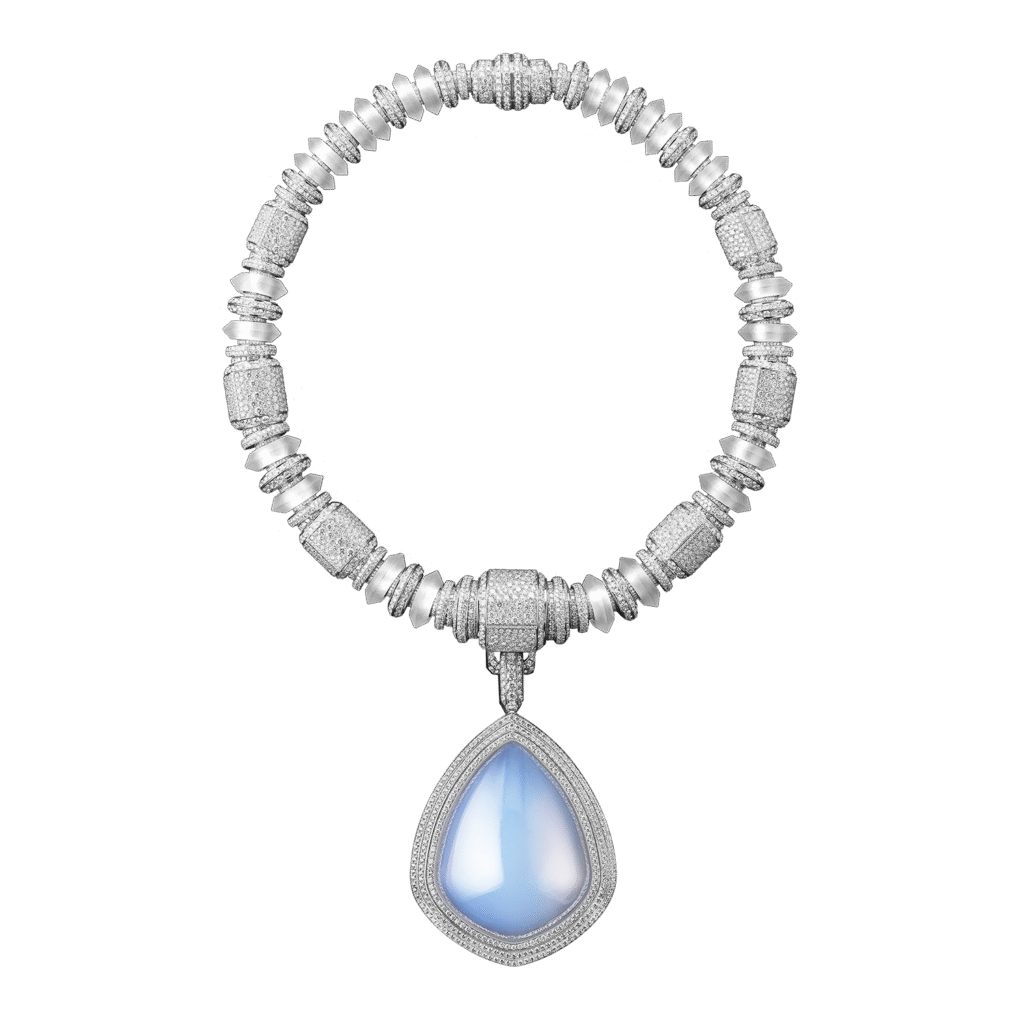Sculpting the Sky: Ioannis Michaloudis and the Art of Aerogel
When artist Ioannis Michaloudis took the stage at the 2024 summit of the Advanced Research Projects-Energy agency (ARPA-E) in Dallas, many attendees were puzzled. What could an artist offer to a gathering of the world’s top scientists, engineers, and energy entrepreneurs? As he began to speak, Michaloudis painted poetic images of the sky as the planet’s protective garment and proposed fantastical concepts like crafting shade clouds from space debris. He described his work as “biomimicry of the sky.”
But by the end of his presentation, the connection between his art and the tangible world of energy innovation was crystal clear. He presented a video of his now-iconic Coperni AirSwipe bag – a handbag crafted from aerogel – being filled with molten brass, a feat that left the audience in awe. The bag, which had already gone viral upon its runway debut, was not just a fashion statement; it was a demonstration of aerogel’s extraordinary heat resistance and insulating properties.

The Artist Driven by Clouds
Ioannis Michaloudis, originally from Greece and now based in Limassol, Cyprus, is likely the only artist in the world who sculpts, crafts, and designs with silica aerogel – the world’s lightest solid. His creative journey began with an almost childlike curiosity: Could he create a three-dimensional cloud?
That question became an obsession that took him from the Massachusetts Institute of Technology (MIT) in Cambridge to Shivaji University in Maharashtra, India, and ultimately to NASA’s Jet Propulsion Laboratory (JPL) in Southern California.
The spark for this quest ignited in 1998, when Michaloudis was completing his Ph.D. In a photograph he had taken, he noticed a cloud shaped like a hook. If nature could form such intricate shapes, he reasoned, why not replicate them? Why not sculpt a cubic cloud?
The Discovery of Aerogel
Initially, Michaloudis attempted to use lasers to manipulate steam at MIT, but the technique proved too energy-intensive. His breakthrough came in 2001, when a researcher approached him, asking, “Are you the guy who wants to make a cubic cloud?” The researcher then introduced him to silica aerogel – a substance that looked and felt like a piece of cloud.
Silica aerogel is 99% air, giving it a ghostly, translucent appearance. It’s created by combining a polymer with a solvent to form a gel, which is then flash-dried under pressure, leaving behind a porous, solid structure. These microscopic pores make aerogel appear smoky blue or orange and give it properties that are almost otherworldly.
NASA and the Stardust Connection
While Michaloudis explored aerogel in his artistic endeavors, NASA was pursuing it for a very different reason: space exploration. In the mid-1990s, NASA’s Jet Propulsion Laboratory hired materials scientist Steve Jones to develop aerogel suitable for the Stardust mission.
The goal was to capture particles from the tail of a comet. But capturing such high-speed particles was nearly impossible; any conventional material would vaporize them on impact. Aerogel, with its porous structure, offered a solution. However, making aerogel that met NASA’s rigorous standards for space missions was no small feat. It took Jones two years to develop a flight-ready version.
When the Stardust spacecraft launched in 1999, it carried this precious material, and the mission later succeeded in returning comet particles to Earth, unveiling a treasure trove of organic compounds.
Michaloudis, captivated by this achievement, reached out to JPL in the early 2000s and connected with Jones. Their collaboration proved pivotal. Jones introduced Michaloudis to various types of aerogels, their properties, and the intricacies of working with them. Most significantly, Michaloudis was inspired by the size of JPL’s 50-liter reactor. Until then, he had only worked with small-scale reactors, limiting the size of his creations. NASA’s work convinced him to invest in a 20-liter reactor for his own lab, opening new artistic possibilities.
While the NASA aerogel recipes proved less than ideal for large sculptures due to their tendency to crack, Michaloudis gained invaluable knowledge about handling large-scale reactors safely, including the use of emergency release valves to prevent dangerous pressure build-ups.https://spinoff.nasa.gov/Aerogel_Art_Attracts_Attention
Perfecting Aerogel Art in India
Michaloudis’ journey then took him to India, where he refined his aerogel techniques at Shivaji University. He learned to use methanol as a solvent, which produced aerogels better suited for large, complex forms. In India, he also discovered aerogel’s resilience to molten metals. In a dramatic experiment, he submerged an aerogel sample in liquid brass, watching as the material remained intact while molten metal flowed around it. “We had lava surrounding sky. It was amazing,” he recalled, describing the moment as deeply emotional.
Molding the Sky: An Artistic Portfolio
Michaloudis held his first solo exhibition in 2006 and has since presented more than a dozen solo shows. He views silica aerogel as the embodiment of the sky, which he sees as a fragile and endangered entity.
“Because it is blue and orange at the same time, I say it is like a piece of sky. So it’s like molding the sky,” he explained.
His portfolio is both diverse and mesmerizing. It includes reinterpretations of ancient Greek sculptures, delicate nymphs suspended in transparent cylinders, ethereal masks, jewelry featuring aerogel encased in glass, and even bottled clouds.
He has also crafted “Sky Cubes” containing suspended clouds of magnetized metal filings, “nebulas” of phosphorous floating within aerogel discs, and other pieces that capture the boundless interplay between science and art.

Aerogel in High Fashion and Global Recognition
The fashion world soon took notice of his groundbreaking work. In 2020, French luxury brand Boucheron collaborated with Michaloudis to create “Goutte de Ciel” (Drop of Sky), the centerpiece of their high jewelry collection that year. The pendant, a large aerogel sphere encased in quartz and adorned with white gold and thousands of diamonds, sold for half a million dollars.
But his most famous creation, the Coperni AirSwipe bag, catapulted him into global fame. When the bag debuted at Coperni’s 2024 fall collection, it immediately went viral. The handbag appeared to glow in the model’s hand, its translucent blue shimmering under runway lights. The response was instantaneous, with millions of likes and media coverage around the world.
When Michaloudis later demonstrated the bag’s extraordinary durability by filling it with molten brass, it became not only a fashion icon but also a symbol of material innovation.
“For about 48 hours, it was in the media all over the world,” Michaloudis said, still marveling at the bag’s meteoric rise.
The AirSwipe’s success sparked a surge of interest in his work. He has since received requests to craft aerogel chairs, glasses, and an array of other products. His next high-profile collaboration is with Mercedes-Benz, though details remain under wraps.
A Legacy Bridging Art and Science
Michaloudis’s journey from cloud-inspired artist to aerogel pioneer is a testament to interdisciplinary exploration. He credits NASA’s Stardust mission and his mentorship at JPL as fundamental to his artistic evolution.
“If Stardust wasn’t there, we wouldn’t be having this conversation,” he often reflects. “I am what I am, and we made what we made thanks to the Stardust project.”
His work sits at the intersection of science, art, and fashion, pushing the boundaries of what materials can achieve. By transforming aerogel – a substance originally designed to capture the dust of the cosmos – into jewelry, sculptures, and runway sensations, Michaloudis invites us to see the sky not just as something above us, but as something we can hold, shape, and even wear.

Looking Ahead: The Future of Aerogel in Art and Design
The story of Ioannis Michaloudis is still unfolding. As aerogel technology advances, it holds promise not just for art and fashion, but also for architecture, energy efficiency, and even medicine. Michaloudis’s pioneering work paves the way for future collaborations where creativity and scientific ingenuity will continue to blur the lines between the imaginable and the achievable.
His journey underscores a powerful message: when curiosity meets persistence, even the sky is not the limit – it’s just the beginning.
